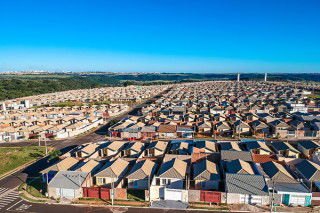Cement sales in Brazil advanced 13.6 per cent YoY to 5.465Mt in May 2021 from a low base of 4.809Mt in May 2020, reported the country’s cement association, SNIC.
Real estate work continues to drive the market as well as residential and commercial renovations. The drop in interest rates, simplification and reduction of bureaucracy and new credit lines have supported the purchase of real estate in the country. However, cuts in the federal government budgets, particularly in terms of infrastructure and housing programmes, combined with currency devaluation, inflation and rising employment, are creating uncertainty.
The northern market showed the largest YoY growth at 30.7 per cent with sales rising to 247,000t, followed by the central-western market, which expanded by 22.5 per cent to 675,000t. In the south sales were up 19.9 per cent to 956,000t while in the northeast volumes delivered increased eight per cent YoY to 1.012Mt. The country’s largest market, the southeast, saw a 10.3 per cent advance to 2.575Mt.
Exports in May 2021 increased 140 per cent to 36,000t from 15,000t.
January-May 2021
Domestic cement sales in the first five months of 2021 also reflected a positive trend with the market expanding by 18.9 per cent YoY to 25.83Mt from 21.73Mt in the 5M20, according to SNIC.
Sales in the southeast were up 15.8 per cent to 12.147Mt in January-May 2021 from 10.488Mt and increased 19.5 per cent YoY to 5.244Mt from 4.39Mt in the northeast. Good gains were also noted in the south, where the market grew by 21.5 per cent to 4.471Mt from 3.68Mt in the 5M20. The central-west reported the highest growth, 25.8 per cent, to 2.907Mt from 2.31Mt when compared with the equivalent period in the previous year. Sales in the north advanced 23.1 per cent YoY to 1.061Mt from 862,000t.
In the 5M21 Brazilian cement producers successfully exported 160,000t of cement, up 162.3 per cent when compared with the year-ago period.
Outlook
The medium- and long-term scenario for the cement industry remains positive, according to SNIC. The concessions, the legal framework for sanitation, the need for logistical infrastructure and the growing housing demand are expected to underpin future market growth. However, rising prices for inputs such as petcoke, electricity, diesel, cellulose and refractories have increased production costs and weigh on efforts to improve the industry’s performance.
